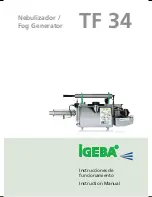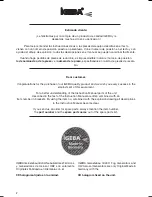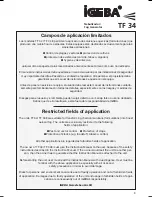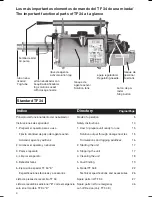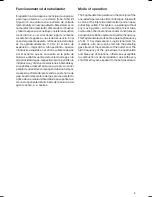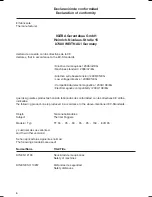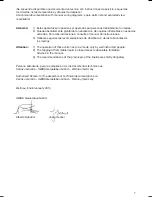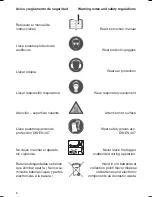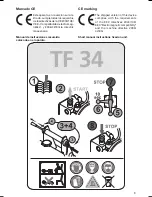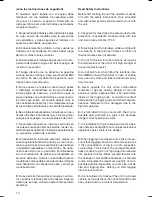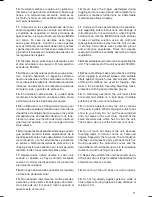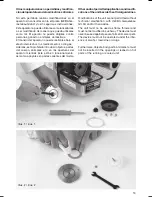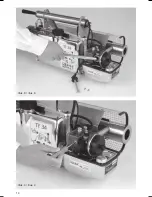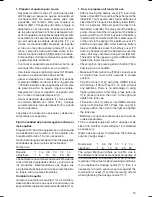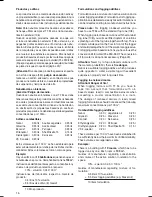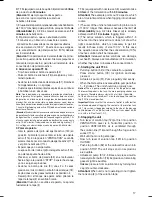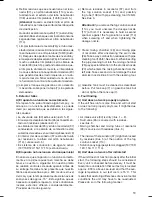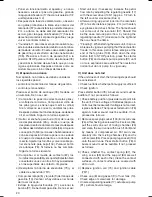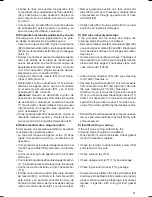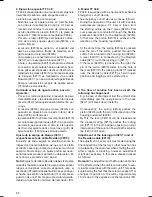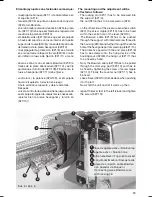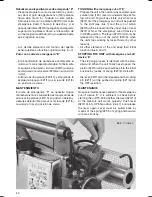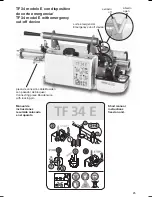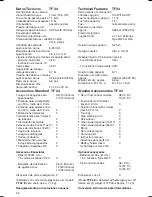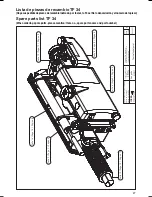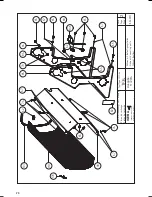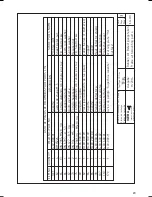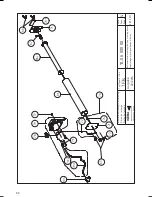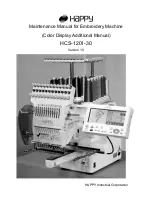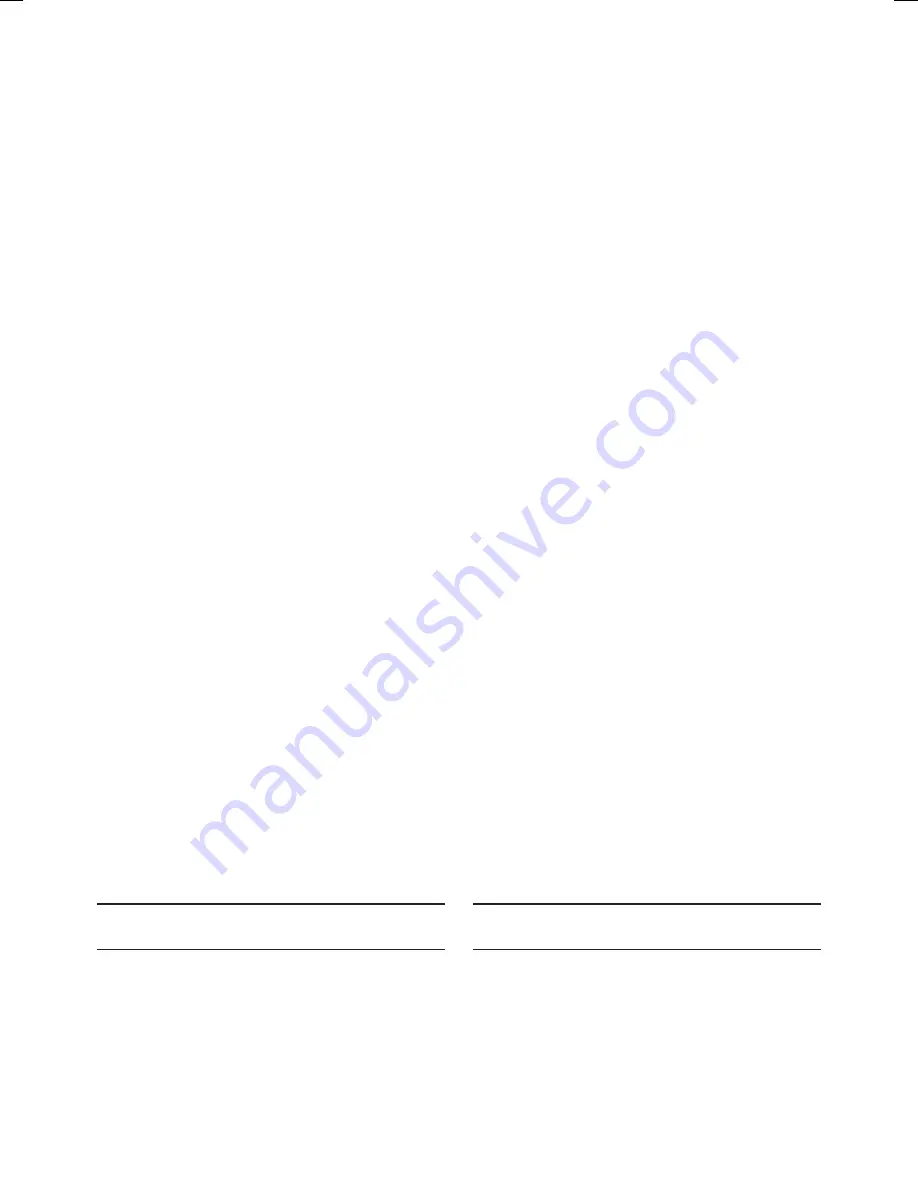
15
1. Preparar el aparato para su uso
- Después de retirar la tapa (71) coloque las pilas
LR20 según el esquema que se encuentra en
la etiqueta (82). Se puede utilizar pilas más
pequeñas, del tamaño LR6 que requiere el
adaptor (86/1). Ponga las pilas LR6 y empuje el
adaptador en el tubo (86). El extremo positivo
de las pilas apuntando al interior del aparato. El
extremo negativo de las pilas esta eléctricamente
conectado con los sportes metálicos del aparato
por el muelle de la cubierta de las pilas (71) y el
tornillo de mariposa (88). Después de insertar
el tubo con las pilas, apriete la tapa (71) con la
mano y empuje el lado perforado sobre el tor-
nillo de mariposa inferior (88) medio atornillado.
Entonces fije el tornillo de mariposa superior (88)
y posteriormente el inferior.
- Controlar el encendido presionado el botón de
arranque (78). Debe oírse bien un zumbido.
- Cerciórese de que el grifo del producto (120) esté
cerrado. La palanca indica hacia arriba.
- Llenar el depósito de combustible (10) usando
el embudo IGEBA con tamiz (142) con gaslolina
>75 RoZ sin aditivos de ninguna clase. El empleo
de gasolina extra no aparte ninguna ventaja.
Después de llenar el deposito se aprieta bien
con la mano la tapa del deposito (7).
- Llenar el depósito de producto (1). Use siempre
el embudo IGEBA con tamiz (141). Coloque
correctamente la tapa del deposito (2) y griarla
hacia la derecha.
Las pilas son accesorios opcionales y deben ser
comprados por separado.
Fijar la cantidad de paso del agente activo por
las boquillas
El aparato TF 34 está equipado con una boquilla
de dosificación de tamaño 0,8. Se adjunta otra
boquilla del tamaño 1,0 como accesorio.
Se ha utilizado agua para determinar las siguientes
cantidades de paso (valores aproximados):
Tamaño de
Boquilla
➝
0,6 0,8 1,0 1,2 1,4
Litros/hora
➝
5
10 15
20 25
La cantidad de paso defiere hasta un 20% debido
a las distintas propiedades físicas y químicas de
los productos. Recomendamos que hagan sus
propias medidas bajo condiciones concretas. Esto
so refiere sobre a países tropicales.
Cambiar la boquilla:
Quando se cambia la boquilla (117) a atornillar y
desatornillas se tiene que usar incondicional una
segunda llave replicando el elpalme de niebla (114).
1. How to prepare unit ready for use
- After removing the battery cover (71) insert bat-
teries of size LR20, according the scheme on the
label (82). You may also use smaller batteries of
size LR6, which requires the battery insert (86/1).
Put in 4 batteries LR6 and push the insert into
the battery tube (86). The plus pole of the battery
points into unit and the minus pole of the battery
points out of the unit. The minus pole of the battery
is electrically connected with the metal supports
of the unit via the spring of the battery cover (71)
and the wing screw (88). After inserting battery
tube with batteries, press the battery cover (71)
down by hand and push the slotted side over the
lower, half way unscrewed wing screw (88) first.
Thereafter fix the upper wing screw (88) and then
tighten the lower wing screw.
- Check ignition by pressing starter button (78). A
buzzing sound is audible.
- Make sure that solution tap (120) is closed. Lever
of solution tap must point upwards in closed
position.
- Fill petrol tank (10) by using the IGEBA funnel
with strainer (142) with petrol >75 RoZ, without
any additives. There is no advantage in using
higher grade petrol. After filling, place tank cap
(7) in proper position, then turn to the right and
tighten the tank cap.
- Fill solution tank (1). Always use IGEBA solution
funnel with strainer (141). Place tank cap (3) in
proper position, then turn to the right and tighten
the tank cap.
* Batteries are optional accessories and must be
ordered separately.
TF 34 is already equipped with a dosage nozzle
size of 0,8. Another nozzle with size 1,0 is attached
as accessory.
Water has been used to determine the following
outputs (rough values):
Nozzle size
➝
0,6 0,8 1,0 1,2 1,4
Liter/hour
➝
5
10 15
20 25
The output (liter/hour) differs up to 20% due to
the different chemical and physical properties of
the formulations. We advise you to do your own
metering of the output under prevailing conditions.
If you replace the dosage nozzle (117), then it is
necessary to hold a second spanner against the
fog solution socket (114) when screwing off and
when tightening the dosage nozzle (117).

